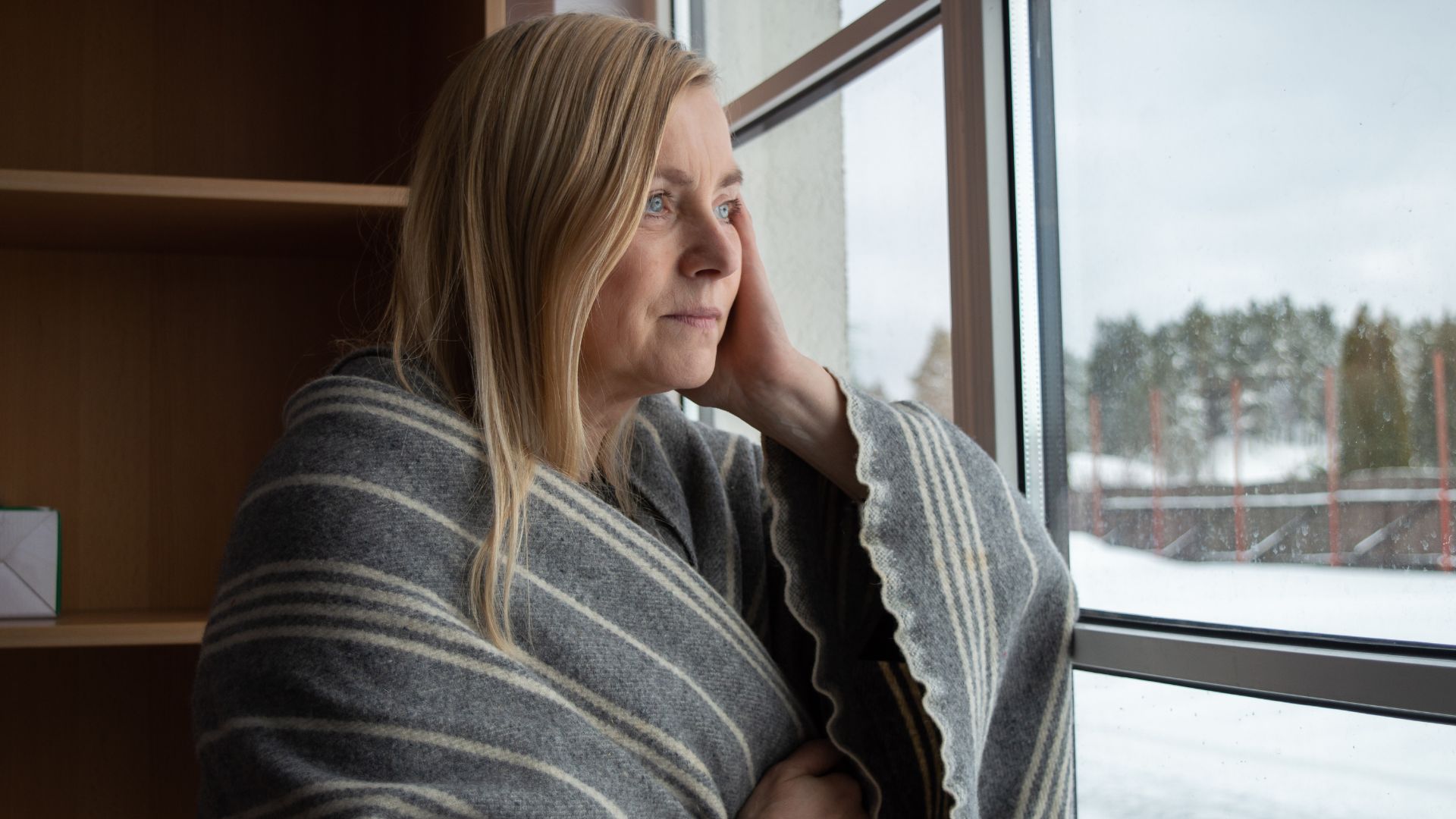Learn what triggers Seasonal Affective Disorder (SAD) and how to best manage your symptoms. This mood-related disorder typically develops in the fall and winter, when the days get shorter. To help alleviate your seasonal affective disorder symptoms, maintain a regular schedule. Incorporate light therapy and ensure you’re getting regular physical activity for even more effective outcomes! Here are our natural approaches to managing Seasonal Affective Disorder (SAD).
What Is Seasonal Affective Disorder
Seasonal Affective Disorder, commonly referred to as SAD, is a form of depression related to seasonal changes. It begins and concludes around the same time each year, creating a reliable pattern for those affected.
For most, symptoms onset during the fall or winter months when the daylight hours are reduced. SAD is different from holiday stress or other seasonal mood changes. Rather, it’s the onset of chronic, invasive feelings of sadness, anxiety, or emptiness that disrupt life as you know it. Other symptoms include not wanting to do things you once enjoyed and marked change in sleep habits, like oversleeping. You might find your appetite changing too, with increased cravings for carbs.
The underlying reasons for SAD are rooted in biological changes caused by seasonal transitions. Less exposure to sunlight can disrupt your internal clock — or circadian rhythm — making symptoms worse.
Symptoms And Risk Factors Of SAD
Seasonal Affective Disorder (SAD) causes drastic shifts in mood. People with SAD may feel like they’re in a fog or are low energy all day long. These changes may result in increased irritability, restlessness, or even trouble focusing.
For others, pessimistic thinking regarding the difficulties of the season — such as harsher weather conditions or less sunlight — may exacerbate these emotions. Sleep disturbances, like insomnia, are quite prevalent as well, particularly when daylight hours change. You may feel physical effects like lethargy and appetite shifts.
People who are deficient in vitamin D may be more susceptible, since vitamin D deficiency is known to affect serotonin, a crucial mood stabilizer.
SAD is more commonly experienced by women and those who live at higher latitudes, or farther from the equator. People with a family history of depression or other mood disorders face a higher likelihood of experiencing seasonal depressive episodes.
How Naturopathic Medicine Addresses SAD
Naturopathic medicine offers an effective, natural, and personalized approach to health. It gets to the heart of what is causing a condition rather than just treating the symptoms. For SAD, this is done by targeting factors that exacerbate the condition, such as lack of sunlight, nutrient deficiencies, and increased stress levels.
Treatments usually involve a combination of lifestyle improvements, natural supplementation, and therapeutic activities. For instance, light therapy has been well-known since the 1980s as an effective treatment for winter-pattern SAD. When combined with naturopathic approaches like vitamin D supplementation, it can provide even greater relief.
Naturopathic treatments—such as yoga, tai chi, and meditation—can reduce stress, promote positive mood, and bring the body back into equilibrium. For example, practicing yoga on a consistent basis can help foster relaxation and increase energy levels, and meditation helps foster concentration.
Herbal supplements are also helpful to improve your mood. Furthermore, adding omega-3 fatty acids into your diet is another fantastic mood-regulating power move.
Light Therapy For SAD
Light therapy is administered through a specially designed light box that mimics natural sunlight to regulate your circadian rhythm. This biological clock doesn’t just control your sleep-wake cycle—it regulates other vital body processes, including digestion and hormone production.
During winter months, when daylight is limited, exposure to this bright light can help balance serotonin levels, a chemical that affects mood. For optimal results, use the light box as soon as you wake up. Try to accomplish this within the first hour of your day. Position the therapy box 16-24 inches from you. It’s best to sit in front of it for about 30 minutes each day.
Dietary Adjustments For SAD
How you feel is very much affected by what you eat. Some of the foods we eat definitely have an impact on mood and energy. This is particularly helpful for individuals who are fighting SAD.
Eating a diet high in ,omega-3 fatty acids is a positive first step. Salmon, mackerel, and sardines are all fatty fish rich in vitamin D. You can obtain omega-3s from nuts—especially walnuts—as well as seeds, including chia and flax.
These nutrients have been shown to support overall brain health and can be especially effective at improving symptoms of depression. Adding colourful fruits and vegetables to your meals increases your intake of antioxidants, which helps combat inflammation. These nutrients deliver vitamins that keep you feeling happy and healthy. Eating whole grains such as quinoa, oatmeal, and brown rice makes a difference by stabilizing blood sugar levels. This prevents mood swings from occurring and increases your energy levels during the day.
Natural Approaches To Managing Seasonal Affective Disorder
1. Creating A Daily Routine
Maintaining a consistent everyday schedule is one of the most important tips when it comes to addressing SAD. Begin with regular sleep and wake times, including on days off, to help establish a predictable internal clock. Schedule fun, productive activities that help add structure and purpose to each day, such as a morning walk or an evening wind-down routine.
Brighten your environment, starting by opening your curtains and blinds during the day to let as much light in as possible. Allow the maximum amount of natural light into your space! If you can’t get enough natural light, it may be time to invest in a SAD light.
2. Spending Time Outdoors
One of the easiest natural approaches you can adopt is spending time outdoors. Even when the weather is cloudy or chilly, getting natural light can still help improve your mood. A short walk outside, maybe during lunch or just around your neighbourhood, lets you soak up daylight and get some fresh air.
Aim to get outside first thing in the morning. Sunrise isn’t just a metaphor—getting exposure to that morning light will go a long way to resetting your body’s internal clock!
3. Practicing Mindfulness And Relaxation
Relaxation techniques are another effective tool for relieving stress associated with SAD. Movements and meditations found in yoga and tai chi are wonderful, natural ways to help realign your mind and body. These activities help alleviate anxiety and boost overall mood.
Mindfulness and deep breathing exercises are also beneficial. Keeping a regular mindfulness practice or breathwork can be productive self-care strategies. When practiced consistently, even just three or four times a week, you’ll begin to see significant changes over time.
Conclusion
Seasonal Affective Disorder is a serious condition that can be daunting, but taking small, manageable steps every day will start to turn the tide. From dietary changes to light therapy, every little bit counts towards managing this condition. Focusing on sleep, movement, and time outside provides a consistent trampoline with which to launch ourselves into good days.
If you’re in need of managing Seasonal Affective Disorder, reach out to a qualified, safe expert today. If you are in the Pickering region contact Dr. Cecilia Ho today. Call Dr. Cecilia Ho at 905-492-8688 to learn more!









